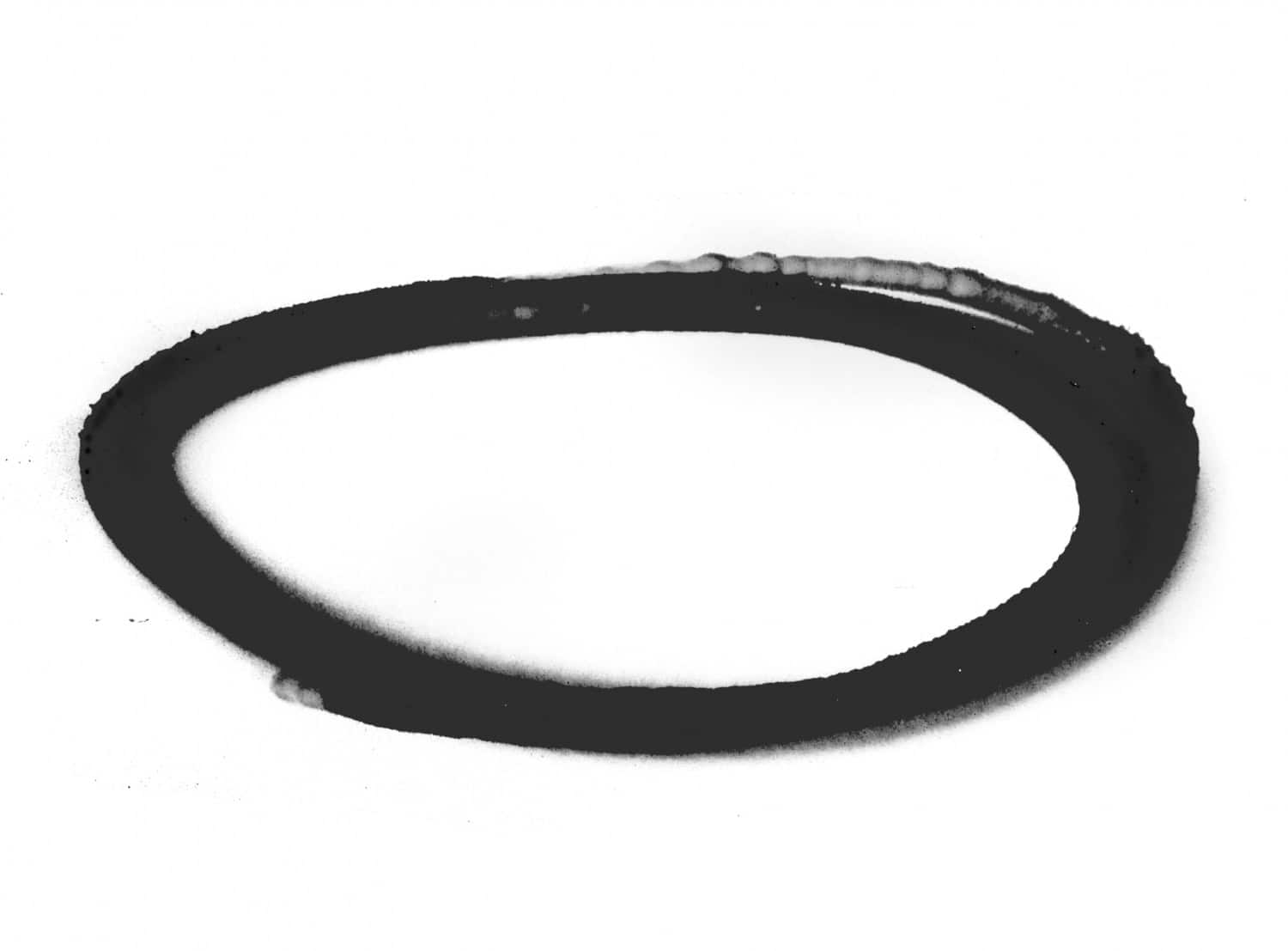The beauty of mathematics and geometry is found in their universality. No matter the language or culture, a circle remains a circle, a square remains a square, and an oval remains an oval. But what happens when we take that oval and stretch it into three dimensions? This is where the fascinating concept of the ellipsoid comes into play. This comprehensive guide provides an in-depth understanding of the 3D oval, more accurately referred to as an ellipsoid.
Historical Significance
During the course of history, several mathematicians and scientists have made notable contributions to the study of ellipsoids and advancements in geometry. Here are some key figures:
| Name | Contribution |
|---|---|
| Archimedes | Known for his work on finding the volume and surface area of a sphere, Archimedes laid the foundation for understanding ellipsoids. |
| Isaac Newton | Newton’s laws of motion and universal gravitation played a crucial role in comprehending celestial bodies, many of which can be modeled as ellipsoids. |
| Leonhard Euler | Euler’s mathematical formulas and equations described ellipsoids and their properties, providing a framework for further research. |
| Carl Friedrich Gauss | Gauss developed the theory of ellipsoids of revolution, establishing the mathematical framework for accurately representing the Earth’s shape. |
| August Ferdinand Möbius | Möbius’ work on conic sections and quadratic forms contributed to understanding ellipsoids and their relationship to other geometric shapes. |
| Karl Pearson | Pearson introduced the concept of ellipsoidal probability distributions, which have applications in statistical modeling and inference. |
These individuals and their contributions have played a significant role in advancing our understanding of ellipsoids and their applications in various fields of study.
Definition of an Ellipsoid
An ellipsoid, in the simplest terms, is a three-dimensional (3D) shape derived from an oval. It embodies what would happen if an oval was ‘stretched out’ or ‘extruded’ into the third dimension. Instead of having two axes like an oval, an ellipsoid has three: the X, Y, and Z axes.
The ellipsoid is defined mathematically as:
(x/a)² + (y/b)² + (z/c)² = 1
where a, b, and c are the lengths of the semi-axes along the X, Y, and Z dimensions, respectively, and x, y, z are coordinates of a point on the ellipsoid.
Characteristics of an Ellipsoid
| Three Axes | An ellipsoid has three axes of symmetry – two minor axes of the same length and a major axis. The two minor axes form the base oval, and the major axis forms the height of the shape. |
| Curved Surface | Unlike polyhedrons, which have flat faces, an ellipsoid has a smooth, curved surface. |
| Symmetry | An ellipsoid has three planes of symmetry, corresponding to its three axes. |
| No Edges or Vertices | Unlike many 3D shapes, an ellipsoid doesn’t have any edges or vertices. Its surface is perfectly smooth and continuous. |
Varieties of Ellipsoids
Depending on the relative lengths of the three axes (a, b, and c), we can categorize ellipsoids into three main types:
Triaxial or Scalene Ellipsoid
An ellipsoid is a three-dimensional geometric shape that resembles a stretched or squashed sphere. In a triaxial or scalene ellipsoid, all three axes, denoted as a, b, and c, have different lengths. This is the most general form of an ellipsoid.
Characteristics of a Triaxial or Scalene Ellipsoid:
- Axes Lengths: The triaxial or scalene ellipsoid is characterized by three axes: a, b, and c, each having a different length. Among these axes, “a” is the longest, “b” is intermediate, and “c” is the shortest;
- Shape: A triaxial or scalene ellipsoid is an asymmetrical shape without any planes of symmetry;
- Volume: The volume of a triaxial or scalene ellipsoid can be determined by applying the formula V = (4/3)πabc, where a, b, and c represent the respective lengths of its axes;
- Surface Area: The surface area of a triaxial or scalene ellipsoid can be calculated using the formula: A = 4π[((b^2 * c^2) + (a^2 * c^2) + (a^2 * b^2))/3]^0.5;
- Eccentricity: Eccentricity quantifies the deviation of an ellipsoid from a perfect sphere, and in a triaxial or scalene ellipsoid, the eccentricity varies across different axes. It can be computed using the formula: e = [(a^2 – b^2)/(a^2 – c^2)]^0.5.
Application of Triaxial or Scalene Ellipsoid
| Geodesy and Earth Sciences | Triaxial or scalene ellipsoids are utilized in geodesy and earth sciences to represent the shape of the Earth more accurately, taking into account its irregularities and variations in gravitational forces. These ellipsoids serve as reference models for geodetic surveys, satellite measurements, and cartography. |
| Biomechanics | Triaxial or scalene ellipsoids find applications in biomechanics and human movement analysis to model joint rotations and body segment movements with improved precision. These ellipsoids are used to estimate joint range of motion, evaluate kinematic parameters, and understand the mechanics of human motion. |
| Material Science | In material science and engineering, triaxial or scalene ellipsoids are employed as models to study the mechanical properties and deformation behavior of anisotropic materials, such as crystals or fiber-reinforced composites. The unique shape of these ellipsoids enables researchers to simulate and analyze complex stress and strain distributions in different directions. |
By following these steps, you can determine the volume and surface area of any triaxial or scalene ellipsoid with known axis lengths.
Prolate Spheroid (Oblate Spheroid)
A prolate spheroid, also known as an oblate spheroid, is a three-dimensional shape that is formed by rotating an ellipse around its major (long) axis. It is characterized by two axes of the same length (a = b) which are longer than the third axis (c). These types of ellipsoids are shaped like a stretched or squashed sphere.
Properties of a Prolate Spheroid (Oblate Spheroid):
- Dimensions: The major axis (a) refers to the longer axis of the ellipsoid, while the minor axis (b) represents the shorter axis. Additionally, the polar axis (c) is the axis perpendicular to both the major and minor axes;
- Shape: A prolate spheroid exhibits elongation along its major axis and flattening along the minor axis, giving it a shape similar to that of a rugby ball or an American football;
- Axes Length: In a prolate spheroid, the major and minor axes share equal lengths (a = b), both of which are longer than the polar axis (c). The major axis corresponds to the equatorial diameter, whereas the polar axis determines the polar diameter of the spheroid;
- Surface Area: The surface area of a prolate spheroid can be determined by applying the formula: Surface Area = 2π * a^2 + (π * c^2 * ln((1 + e) / (1 – e))) / e;
- Volume: The volume of a prolate spheroid can be computed by utilizing the formula: Volume = (4/3) * π * a^2 * c;
- Eccentricity: The eccentricity (e) of a prolate spheroid, which quantifies its degree of elongation or flattening, can be determined using the formula: Eccentricity (e) = sqrt(1 – (c^2 / a^2)).
Applications of Prolate Spheroids
| Astronomy | Some celestial bodies such as planets, stars, and galaxies exhibit prolate spheroidal shapes due to their rotation. |
| Sports Equipment | Sports balls, like rugby balls and American footballs, are designed in the shape of a prolate spheroid for better aerodynamic performance. |
| Engineering | Prolate spheroids are used in engineering applications where a specific shape with reduced cross-sectional area is required, such as aerodynamic structures or antenna design. |
Sphere
A sphere is a three-dimensional geometric shape in which all three axes have the same length (a = b = c). While a sphere is technically a special case of an ellipsoid, it is often treated separately in practical contexts due to its unique properties.
Properties of a Sphere:
- Dimensions: All three axes of a sphere are equal in length, denoted by ‘a’;
- Shape: A sphere is a perfectly symmetrical shape with a surface that is curved evenly in all directions, and it lacks any edges or vertices.s;
- Surface Area: The surface area of a sphere can be determined by applying the formula: Surface Area = 4π * a^2;
- Volume: The volume of a sphere can be computed by utilizing the formula: Volume = (4/3) * π * a^3.
Applications of Spheres
| Geometry and Mathematics | Spheres are fundamental shapes in geometry and are used in various mathematical calculations. |
| Physics | Spheres are commonly used to model physical systems and objects, such as particles, planets, and celestial bodies. They provide a simple and idealized representation of real-world objects. |
| Engineering and Design | Spherical shapes are employed in engineering applications where uniform distribution of forces or pressures is desired, such as domes or pressure vessels. |
Ellipsoid Fitting and Estimation
Ellipsoid fitting is a powerful technique used to estimate parameters and infer underlying structures from a set of data points. By fitting an ellipsoid to the data, we can gain valuable insights into the shape, orientation, and size of the underlying distribution. This fitting process finds applications in diverse fields such as computer vision, robotics, and statistical analysis.
Ellipsoid fitting is utilized in various fields for different purposes:
Computer Vision
Computer Vision is a field of study and application that encompasses various tasks and techniques related to visual understanding and perception by computers. It involves a range of tasks, including object detection and recognition, estimating object pose and size, as well as augmented reality and virtual reality applications. Some key aspects of Computer Vision include:
- Object Identification: This task involves the ability of a computer system to identify and classify objects within images or video footage. It uses algorithms and models to analyze visual patterns and features, enabling the system to recognize and categorize objects accurately;
- Spatial Information: Computer Vision techniques are employed to determine spatial information, such as the location, orientation, and dimensions of objects within an image or video. This enables applications like robotics, autonomous vehicles, and mapping systems to perceive and navigate the physical world;
- Integration of Computer-Generated Content: Computer Vision plays a crucial role in augmented reality and virtual reality applications. By combining computer-generated content with real-world environments, it enhances user experiences by overlaying digital elements onto the physical world or creating immersive virtual environments.
Robotics
In the realm of robotics, various components and tasks contribute to the overall functionality and capabilities of the systems. Some important aspects include:
- Environment Modeling and Perception: Robotics involves creating models of the surrounding environment using sensor data, such as cameras, lidar, or depth sensors. These models provide a representation of the physical space, including objects, obstacles, and landmarks, enabling the robot to perceive and navigate its surroundings effectively;
- Object Localization and Shape Estimation: Robots need to identify and locate objects within their environment accurately. Computer vision techniques are employed to detect and localize objects, as well as estimate their shape and dimensions. This information is crucial for tasks such as grasping, manipulation, and interaction with the environment;
- Path Planning, Obstacle Avoidance, and Manipulation Tasks: Planning a path from the robot’s current location to a desired goal while avoiding obstacles is a fundamental task in robotics. Path planning algorithms leverage environment models and perception data to generate optimal trajectories. Additionally, manipulation tasks involve precise control of robot arms or grippers to interact with objects, perform assembly tasks, or manipulate the environment.
Statistical Analysis
Statistical analysis involves the application of statistical methods and techniques to analyze and interpret data. Within this field, several important tasks and techniques are employed, including:
- Multivariate Data Analysis: This involves analyzing datasets with multiple variables or dimensions simultaneously. Multivariate data analysis techniques help in identifying relationships, dependencies, and patterns among different variables, enabling a deeper understanding of complex data;
- Outlier Detection and Removal: Outliers are data points that deviate significantly from the normal patterns or distribution of the dataset. Outlier detection techniques are used to identify these unusual observations, which can provide valuable insights or indicate data quality issues. Removing outliers can improve the accuracy and reliability of statistical analyses;
- Cluster Analysis and Pattern Recognition: Cluster analysis involves grouping similar data points together based on their characteristics or properties. It helps in identifying natural clusters or segments within a dataset. Pattern recognition techniques, on the other hand, focus on detecting and extracting meaningful patterns or structures from data, enabling the identification of trends, anomalies, or regularities.
Algorithms and Techniques
Several algorithms and techniques have been developed for ellipsoid fitting. Here are some commonly used methods:
| Algorithm | Description |
|---|---|
| Principal Component Analysis (PCA) | The algorithm identifies the principal axes of the data and fits an ellipsoid aligned with these axes. |
| Iterative Nonlinear Least Squares (INLS) | The algorithm iteratively refines the parameters of the ellipsoid and minimizes the distance between data points and the ellipsoid surface. |
| RANSAC (Random Sample Consensus) | The algorithm robustly handles outliers and noise in the data by iteratively selecting inlier data points and fitting ellipsoids. |
| M-estimators | The algorithm employs a robust estimation method using maximum likelihood estimation, which accounts for uncertainties and outliers in the data. |
Conclusion
The three-dimensional equivalent of an oval is called an ellipsoid. This shape is characterized by its three axes of symmetry, curved surface, and lack of edges or vertices. Furthermore, depending on the relative lengths of its three axes, an ellipsoid can be classified into a triaxial or scalene ellipsoid, prolate or oblate spheroid, or even a sphere.
The ellipsoid is not just a fascinating mathematical concept; it has significant real-world implications. From mapping the Earth’s surface to designing sports equipment, understanding ellipsoids is key to numerous scientific and practical applications.





